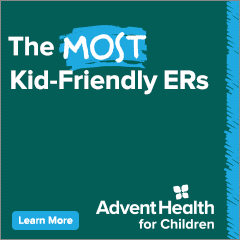Is it a Cold or the Flu? Either Way, It’s Not Much Fun
 Whatever you’ve contracted, you can manage your cold and flu symptoms with lots of purified water and OTC medication like Contac Cold + Flu. With Contac’s multi-symptom formulations you can take on your sore throat, headache, stuffy/runny nose and nasal congestion in one place. Whatever you’ve contracted, you can manage your cold and flu symptoms with lots of purified water and OTC medication like Contac Cold + Flu. With Contac’s multi-symptom formulations you can take on your sore throat, headache, stuffy/runny nose and nasal congestion in one place. |
Hang on to your tissues…cold and flu season is here!
 It’s 7 a.m. on a school day and your household is in early morning chaos mode: packing lunches, checking backpacks, and giving orders to brush teeth and comb hair. Suddenly, little Johnny comes into the kitchen looking pink in the cheeks and glassy-eyed and says,“Mommy, my throat hurts.” In a panic, you put your lips to his forehead to see if he has a temperature while grabbing a tissue to wipe his runny nose. As parents, we’ve all been there and faced the dilemma: Is it a cold or is it the flu? Should I keep Johnny home from school? Should I take him to the doctor?
It’s 7 a.m. on a school day and your household is in early morning chaos mode: packing lunches, checking backpacks, and giving orders to brush teeth and comb hair. Suddenly, little Johnny comes into the kitchen looking pink in the cheeks and glassy-eyed and says,“Mommy, my throat hurts.” In a panic, you put your lips to his forehead to see if he has a temperature while grabbing a tissue to wipe his runny nose. As parents, we’ve all been there and faced the dilemma: Is it a cold or is it the flu? Should I keep Johnny home from school? Should I take him to the doctor?
Let’s face it, classrooms are full of kids with runny noses during allergy, cold and flu seasons. Many parents work full time and can’t afford to take time off and stay home with a sick child if it isn’t absolutely necessary. So what’s a parent to do?
Common Cold and Flu Facts
The common cold (upper respiratory infection) and the flu (influenza) are both respiratory illnesses. However, the viruses that cause them are different, and since the symptoms are often similar, it can be difficult to make a correct diagnosis.
According to the National Institute of Allergy and Infectious Diseases, children have approximately six to ten colds per year, and the Centers for Disease Control and Prevention (CDC) reports that 22 million school days are lost each year in the United States due to the common cold alone.
It’s not surprising that the cold virus spreads so easily among thisage group if you watch a room full of kids holding hands at recess, wiping runny noses on sleeves, and indiscriminately sharing germs. Also, considering that the cold season begins in late August/early September and runs through April… coincidentally the typical school term… it’s no wonder the petri dishes we call classrooms contribute to the spread of viral infections!
The CDC will tell you that flu seasons are unpredictable and vary from season to season. For example, the 2009-2010 season saw the emergence of the H1N1 influenza virus, touching off the first influenza pandemic in over 40 years. A pandemic is a global outbreak of a new virus. Past virus strains can re-emerge, as has been predicted with H1N1 for the coming year, and new strains can appear each year, making the development of an effective vaccine a challenge. Flu activity typically begins in November, peaks in January or February, and continues through May.
Dennis Hernandez, M.D., pediatric emergency physician and medical director for the pediatric ER at Florida Hospital states that cold and flu viruses are spread by droplets from coughing, sneezing and touching contaminated surfaces and infected people. “You can infect others one day before and up to five to seven days after you become sick,” he says. “This year, the CDC is hoping for universal vaccination and recommends that everyone over the age of six months gets vaccinated. It’s important to stress that caregivers of children also get vaccinated, particularly those who care for children underthe age of six months, because those little ones are not protected by vaccination.”
It takes two to four weeks for the antibodies that provide protection against the influenza virus to develop in the body, so September is usually the best time to get vaccinated for the start of the flu season in November. Since the timing and duration of influenza seasons vary, vaccines are made available well into January and beyond. A single vaccine this year should cover H1N1, the seasonal influenza B, and a new strain. Flu mist, an equally effective vaccine, is delivered nasally and used for healthy children over two years of age and for adults up to 49 years of age whoare not pregnant. Dr. Hernandez says the flu mist is not recommended fo rindividuals predisposed to high risk complications such as asthma, or who have a compromised immune system.
Symptoms
It’s not always easy to tell the difference between a cold and the flu, and parents should use their judgment and compare how their child has reacted during previous illnesses. Symptoms of a cold typically come on gradually and are less severe than those of the flu and can include sneezing, stuffy or runny nose, low grade fever, scratchy sore throat, coughing, watery eyes, mild headache and/or body aches. If a child has been immunized, it’s likely that he or she has a common cold. For children under four years, Dr. Hernandez advises that over-the-counter medications should be avoided and parents should treat cold symptoms with saline drops, nose suctioning, fluids, and the use of a humidifier.
Flu symptoms are likely to be more severe and can appear more suddenly. Children with the flu may experience fever above 100.4° F, chills,cough, sore throat, runny or stuffy nose, muscle aches, headaches, fatigue, vomiting and/or diarrhea. If a parent suspects the flu, it is recommended that a primary care physician be consulted. “Deciding whether to send a child to school or not can be a predicament,” Dr. Hernandez admits. “Whenin doubt, it’s a good idea to use caution and call a physician to discuss options, especially for a child who is under 4 years of age or an older child who does not respond to over-the-counter medication such as Tylenol orMotrin. Always call a physician if your child three months or younger has a fever.”
Antibiotics
It’s natural for parents to want to try medication if there is a possibility that their child will feel better faster. “Antibiotics are never indicated for the flu or the common cold,” states Dr. Hernandez. “They may work for secondary complications, such as ear or sinus infections, but in most cases, the virus will run its course with good old fashioned remedies, such as rest, fluids, and Tylenol or Motrin.”
In general, physicians don’ts treat people who have the flu unless theyare at high risk for secondary complications. Dr. Hernandez tells parents that the most important thing they can do to get through the cold and flu season is to make sure that both parent and child get vaccinated, take steps to avoid the virus by putting into practice good hand washing techniques and elbow sneezes. He also recommends that the infected child stay at home for at least 24 hours after the fever is gone to avoid infecting others.
For more information log on to the CDC website and Nemours’ popular website: www.kidshealth.org








